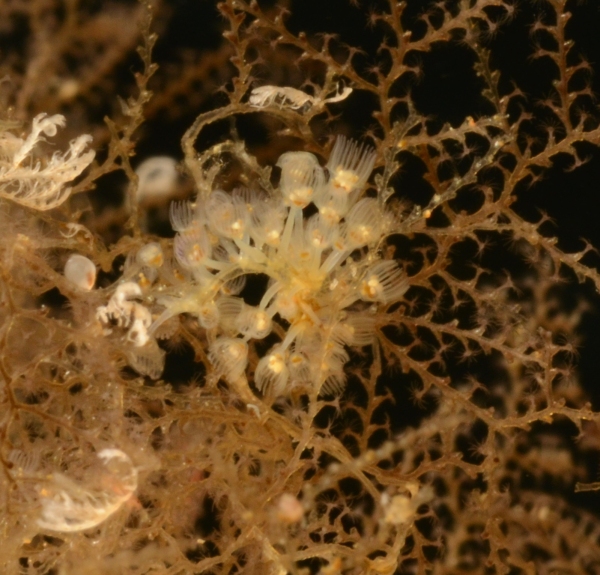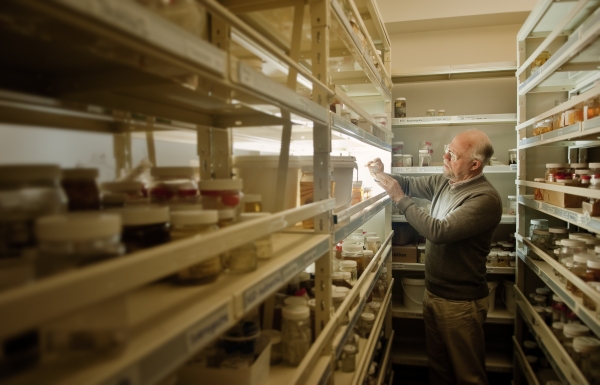What’s in a name? That’s the challenge facing marine biologists when studying ecology or invasive species – they need to know the names of the species or their work is unrepeatable and unverifiable.
This week’s Critters include a large branching hydroid (phylum Cnidaria), to which is attached two curious, and little-known, invertebrates. The bright white one on the left is the moss animal Bicrisia edwardsiana (phylum Bryozoa) and the yellow one on the right is the nodding animal Barentsia discreta (phylum Entoprocta). Both species are widespread in the South Pacific.
Hydroids are delicate ‘stingers’, related to the larger corals and jellyfish. Bryozoans and entoprocts used to be included in the same phylum but are now known, from their structure, life history and genes, to be distinct but on the same general branch of the animal family tree. This branch (Lophotrochozoa) also includes shellfish and various wormy groups. But the animal family tree is only part of the larger picture.
A Higher Level Classification of All Living Organisms
To celebrate International Day for Biological Diversity 2015 we posted an important new paper – “A Higher Level Classification of All Living Organisms” by a host of esteemed authors and based on a community of over 3000 taxonomists work worldwide.
The consensus classification is the product of a collaboration among taxonomic experts and bioinformatics managers, linking the Catalogue of Life, Integrated Taxonomic Information System, World register of Marine Species, SeaLifeBase, Worldfish, Algaebase and Dictionary of Fungi. Collectively, all of these providers list all species of life and, thanks to the classification just published, will be unified in their use of species names and the management classification that accommodates them.
Why is biological classification so important? Basically, it’s a tool to deal with the vast diversity of life – the approximately 1.9 million described species of organisms, and those yet to be discovered. Importantly, the point of classifying organisms in a ‘system’ (which is why biological classification and naming are called ‘systematics’) is to show their genetic relatedness in a great big family tree of life.
And what shape does the tree of life take these days? Gone is the idea of classifying all of life into two kingdoms – animals and plants. The new consensus classification organises life into seven kingdoms! Two of them are ‘bacterial’, or rather prokaryotic, and the remainder are eukaryotic, comprising protozoans, Chromista, true plants, fungi and animals. To revise your basic biology knowledge ‘Prokaryote’ (Greek pro-, before, and karyon, nucleus), refers to cells in which a nucleus is lacking (Bacteria and Archaebacteria). The other five kingdoms are ‘eukaryotic’ because cells have a nucleus (eu-, true).


